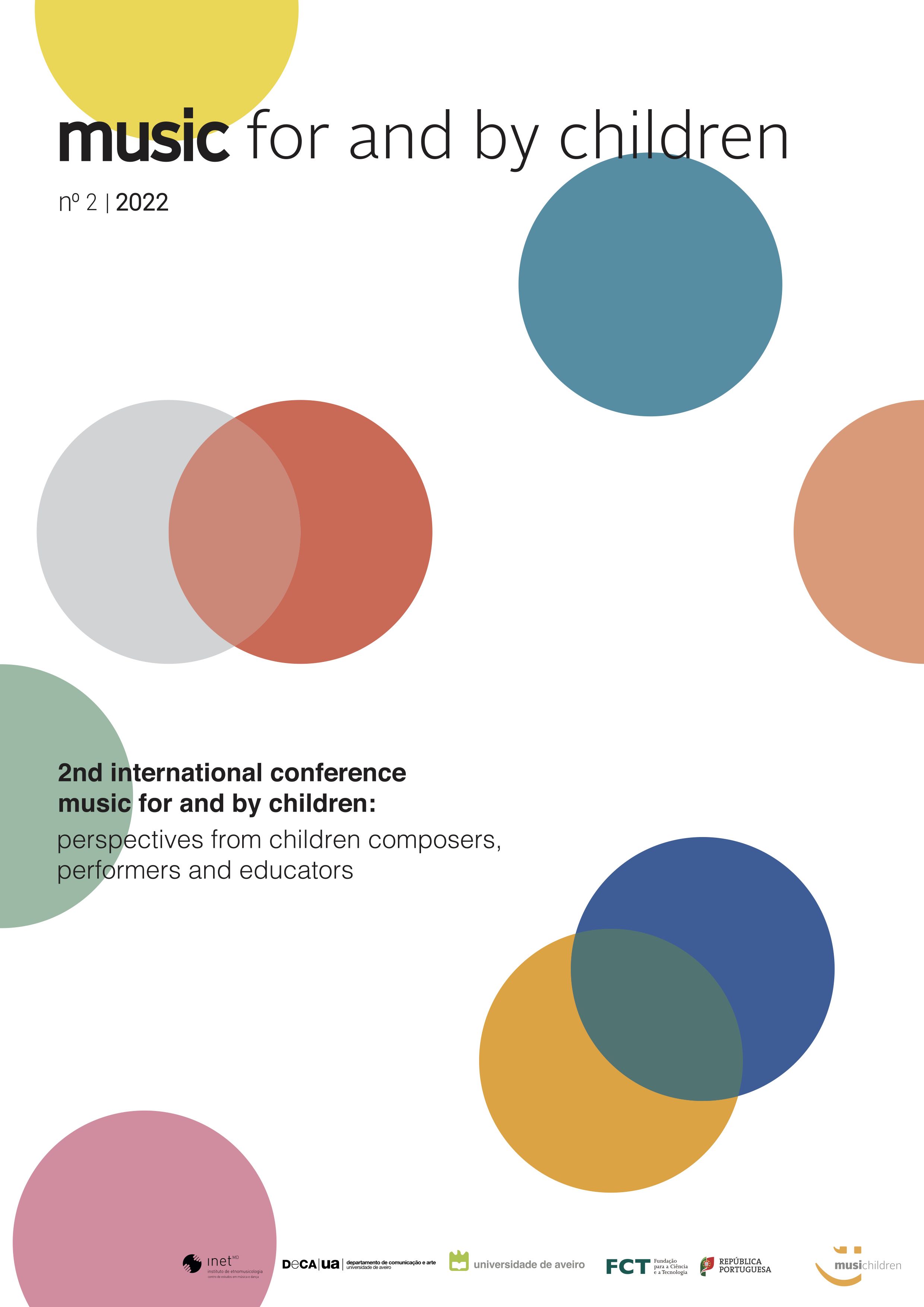Children's composition:
a path to creative music learning
Abstract
Theoretical background or Context
Creative learning is a concept under construction, in which children are recognized as potentially creative, confident investigators, sense builders and decision makers (Craft et al., 2008). The focus is on the child's learning process and the creative potential to be developed in a specific field of knowledge, such as music. Teachers act as moderators of time and space, being open to listening to the children's perspective and working in co-participation: observing them carefully, valuing and understanding their questions, giving them space, providing an environment of trust, encouraging discoveries and allowing them to learn on their own.
Aims
This work presents the results of a master's investigation carried out with the objective of investigating the process of planning and teaching action in music education in Early Childhood Education, discussing the paths built by teachers in order to plan and develop actions in the classroom using as guiding principles the creative learning framework.
Methodology
The data in this work derive from the experiences of music teachers during a training course on creative learning and the development of plans based on this framework. In particular, the data resulting from the second stage of this investigation will be presented, which includes monitoring the pedagogical action of two music teachers in three Kindergarten classes with children between 2 and 5 years old, in Brazil.
Results/Findings
Taking the concept of creative learning as a reference for planning and teaching action, teachers sought to vary the modes of participation, using different strategies to give children a voice as a way to give them the opportunity to actively participate in their own learning and reveal their perspectives on how they learn. Proposals for provocations for learning were made, records through children's drawings, composition activities in groups and collaborative work of creations and arrangements, evaluation and resumption of compositions by the children, graphic records, and conversation circles.
Conclusions/Final considerations
Through the analysis of the events that took place in the classroom, the teachers evaluated the paths adopted, discussed the children's agency (their ways of learning, thinking, solving problems, working in groups, expressing themselves, composing, evaluating, and reflecting) and (re)constructed their perspectives on children, imagination, learning and creativity. The dimensions of music making such as listening, playing, and singing are no longer reproductive elements and are now considered as bridges for children's connections, imagination and ideas. Composition was the most relevant aspect of the new relationships that were established with music making, representing for them the activity that best allowed children to be included in the process of building musical knowledge. Teachers point out that children showed greater involvement in music classes and exceeded their expectations showing that they can work in groups, perform creative activities, and evaluate their productions. This evidence indicates that young children can interact with reflective and creative music making.
References
Copyright (c) 2023 Music for and by children

This work is licensed under a Creative Commons Attribution 4.0 International License.





